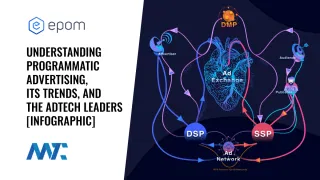Resellers helped scale programmatic by aggregating reach. As the market focus shifts to results, inefficiency and opacity in the supply chain are no longer acceptable. Advertisers want line-of-sight into spend. Publishers want tighter control over access to their inventory. The tendency I can clearly see now is that resale doesn’t guarantee transparency anymore. In this realm, curation changes the rules of the game, emerging as the more strategic approach. Unlike reselling, which adds more middlemen to the supply chain, curation focuses on adding more value.
Now, the industry is in the middle of a transition where transparency and accountability are becoming the new benchmarks of value. The era of classic resale is coming to an end, and curation-driven programmatic is taking its place.
What is Actually Wrong with Resellers?
Before, resellers acted as aggregators who created additional chains. They purchased large volumes of publisher inventory, added markups, and then redistributed it to exchanges and buyers. But beneath the surface, there is still a lack of clarity — advertisers lose clarity over where their money is going and which publisher environments they are actually buying.
In our experience as a white-label partner, many resellers break the direct line between buyer and seller. They blur value and trust and disrupt supply-path integrity. Inventory is repackaged, resold, and rerouted across platforms, which inflates costs and lowers signal quality. Add to this the fact that a single impression bounces through three or four intermediaries before reaching the advertiser. In this scenario, advertisers often find that up to 15% of their spend is exposed to low-quality supply even as they are paying premium CPMs.
And this is why reselling is losing its position in modern programmatic. They no longer align with the demand for high-quality impressions and reliable partners. Instead, curators take the lead.
Curators Match Supply with Genuine Buyer Intent
Curation is emerging as a smarter way to trade inventory in a post-cookie ecosystem. Rather than depending on one type of signal, curators help platforms build addressable audiences using multiple data sources — first-party data, contextual insights, modeled behaviors, and indexed segments. This reduces risks and opens up more meaningful bidding opportunities for advertisers.
For publishers, curation lets them layer first-party data onto inventory, turning generic impressions into targeted, high-value opportunities. It also gives clearer visibility into who is buying and more control over which ads appear. On the SSP side, curators enrich supply by applying audience segmentation and contextual signals at scale — creating precision without sacrificing reach. They filter out non-human traffic and low-viewability placements before a bid is even placed. As a result, buyers aren’t wasting budget on impressions that won’t be seen or don’t align with campaign goals. Furthermore, curators don’t hide their work behind black-box markups. Instead, they define curated deal IDs with clear labels for content targeting specific interests, so buyers know exactly what they’re bidding on.
Nevertheless, curators don’t resell inventory without being listed directly in ads.txt. Instead, they overlay curated deal IDs onto authorized paths. By pre-filtering inventory against ads.txt and app-ads.txt records, curated deals ensure that only impressions from authorized and verified sellers are available for bidding.
A New Supply Philosophy
The rise of curators is more than just a shift in roles. It’s about a new philosophy of building transparent, efficient, and meaningful supply paths. Supply-path optimization has become central. Advertisers are consolidating spending into fewer, cleaner channels. Publishers are reassessing which partners deserve access to their inventory.
These changes make resellers fade as advertisers cut redundant links from the chain. And curators become those who thrive as partners actively solving problems through precision targeting, brand safety assurance, or performance optimization.
This results in:
- Cost savings: curated PMP inventory can reduce overall spend compared to buying the same data on the buy side, since enrichment happens directly within the supply path and avoids additional markups. However, the exact cost outcome depends on the type of data applied.
- Better performance: curated PMP inventory often delivers higher effectiveness because data is processed closer to the source, and segmentation happens directly at the SSP level. For publishers, this is not just about optimizing profit — it’s about regaining control over their relationships with advertisers.
- Deeper insights: curation delivers detailed log-level data, fueling analytics, insights, reporting, and attribution.
All these I mentioned above prove resellers no longer fit publishers’ and advertisers’ needs, who seek control and quality. This era ends, and curated paths emerge in its place, reflecting a completely new philosophy of transparent supply paths.
A Redefined Standard for Trust and Transparency
Curation is no longer just an add-on — it has become the foundation of transparent and efficient supply paths. Opaque chains and hidden markups are being replaced by curated deals built on trust, data integrity, and accountability.
For publishers and SSPs, this means regaining control over margins and relationships. For advertisers, every dollar flows into cleaner, verifiable channels. In practice, curation is not only about efficiency; it also builds partnerships grounded in transparency and long-term value. However, this shift brings both a challenge and an opportunity. The challenge lies in adopting new standards, sharing data responsibly, and learning to work with curated supply. The opportunity is the next generation of programmatic trading — one that is sustainable, trustworthy, and far more effective.
